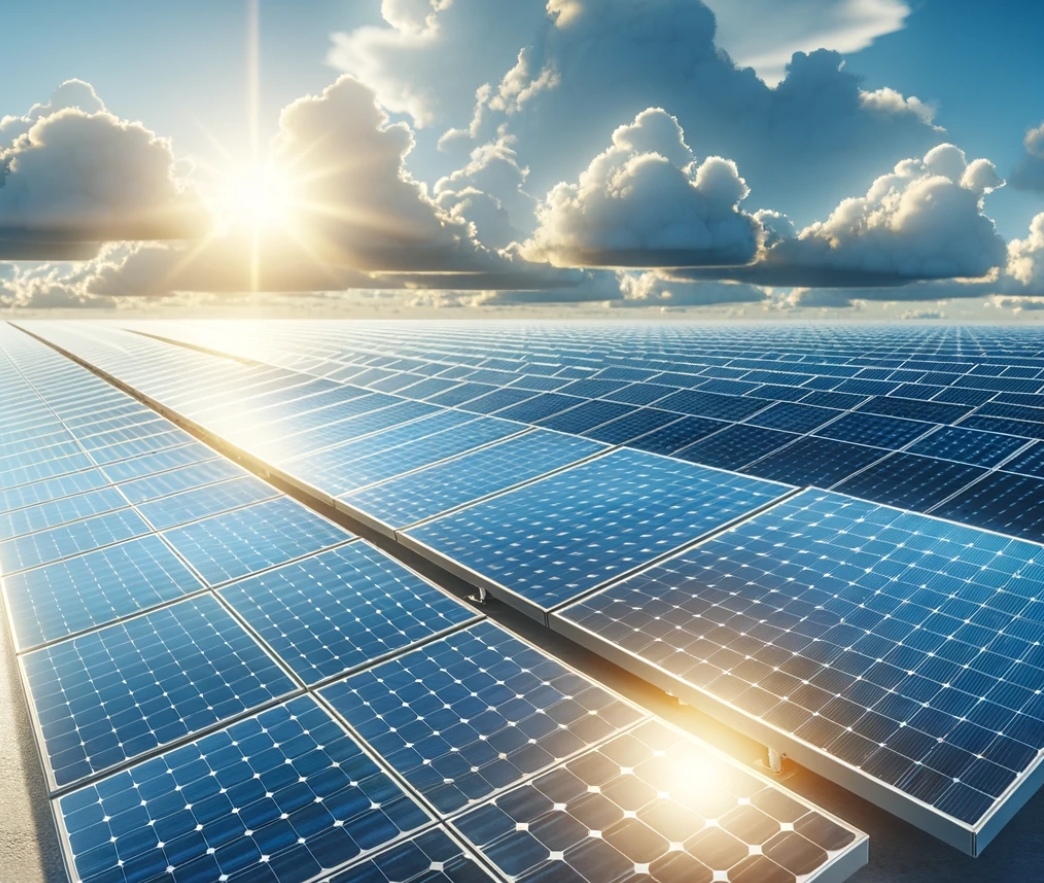
Solar panels are designed to be robust and durable, capable of withstanding various weather conditions. However, extreme weather can present challenges. Let’s examine how solar panels fare in such conditions and what measures can be taken to ensure their durability and performance:
1. High Temperatures and Heatwaves
- Performance: Solar panels typically perform best in sunny conditions, but extreme heat can slightly decrease efficiency.
- Materials: Most high-quality solar panels are built to withstand high temperatures.
- Cooling: Adequate air circulation behind panels can help keep them cooler and maintain efficiency.
2. Cold, Snow, and Ice
- Cold Temperatures: Solar panels can work efficiently in cold temperatures, often performing better than in high heat.
- Snow: A covering of snow can block sunlight, but panels are generally installed at an angle, aiding snow to slide off. Additionally, the dark surface of the panels can help melt the snow.
- Ice: Quality solar panels are designed to withstand the weight of ice; however, ice accumulation might temporarily reduce output.
3. Heavy Rain and Cloudy Weather
- Rain: Rain can actually help clean the panels, improving efficiency by removing dust or dirt.
- Cloudy Weather: While solar panels are less efficient in cloudy conditions, they can still generate significant electricity.
4. Wind
- Wind Resistance: Solar panels and their mounting systems are rated for wind resistance. It’s important to ensure that the installation adheres to local building codes and standards for wind load.
- Potential Damage: In very high winds, panels could be at risk, but this is relatively rare if the system is correctly installed.
5. Hail
- Durability: Most solar panels are designed to withstand hail up to a certain size, usually tested under standard conditions.
- Damage: Severe hailstorms might still cause damage. It’s essential to have insurance to cover such eventualities.
6. Lightning and Electrical Surges
- Lightning Strikes: While direct strikes are rare, solar panel systems should be properly grounded.
- Surge Protection: Systems should include surge protection to safeguard against indirect strikes.
7. Salt Mist and Corrosion (Coastal Areas)
- Corrosion Resistance: For installations near the ocean, it’s crucial to select panels and mounting equipment that are rated for high resistance to salt mist and corrosion.
Maintenance and Preparedness
- Regular Inspections: Frequent inspections and maintenance can identify and address any weather-related wear and tear.
- Insurance: Ensure your solar panel system is covered by your property insurance.
- Quality Installation: Proper installation by certified professionals is key to ensuring that your system can withstand extreme weather.
Conclusion
Overall, modern solar panels are built to endure a range of extreme weather conditions, and their design takes into account the typical weather patterns of the area in which they will be installed. While they are generally very resilient, it’s essential to maintain and inspect them regularly and to make sure they are properly installed and insured. This way, you can ensure optimal performance and longevity of your solar power investment even in the face of challenging weather conditions.
